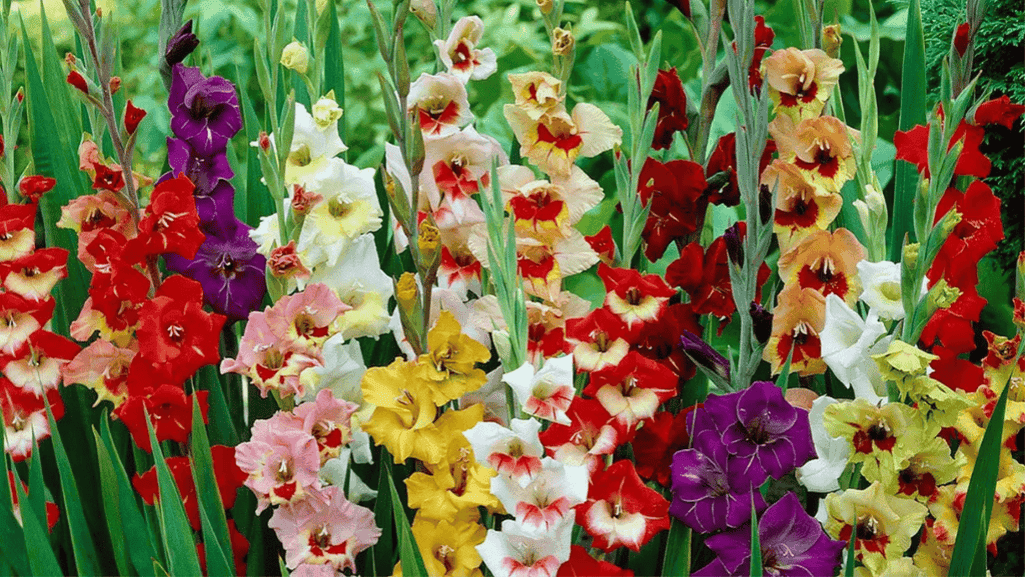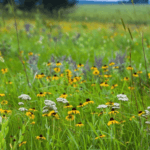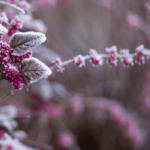
Beautiful flowers gardenia Plants For Your homes

Gladiolus, also known as sword lilies, are stunning perennial flowers. They add elegance to gardens with their tall, vibrant flower spikes. These popular ornamental plants come from the Mediterranean and South Africa.
Gladiolus flowers come in many colors like white, cream, yellow, orange, red, pink, lavender, purple, and green. They are easy to grow and don’t cost much. Plus, they make great cut flowers for floral arrangements.
Gladiolus plants can grow from 2 to 6 feet tall. This makes them stand out in garden beds. They bloom in mid to late summer, adding vibrant colors and height to gardens.
Planting gladiolus corms every couple of weeks in spring helps them bloom all summer. This way, you get a beautiful display of flowers all season.
Gladiolus do well in warm, humid places like Fort Lauderdale, Florida. With the right soil, water, and care, you can have beautiful gladiolus in your garden. They really stand out in tropical zones.
Gladiolus, a favorite for summer gardens, has won the hearts of gardeners for years. Its elegant spikes and bright colors are a sight to behold. These hybrid cultivars come from South Africa and the Mediterranean, with a history as old as ancient times. The name “gladiolus” means sword in Latin, fitting for its long, sword-shaped leaves.
The modern gladiolus (Gladiolus x hortulanus) has been bred for many years. This has led to a wide range of colors, sizes, and shapes. In the 18th century, Europeans first started growing gladioli for their beauty and to use in flowers arrangements.
Today, breeders continue to improve gladioli, offering many varieties to choose from.
Gladioli are loved for their beauty and how easy they are to grow. These bulbs produce tall spikes of flowers that can grow up to 3 feet. They come in many colors, like white, pink, red, purple, and yellow.
Gladioli fit well in many gardens, from beds to containers. They’re even good in vegetable gardens.
Gladioli are also big in the cut-flower business. In the 1950s, the US saw a peak in gladiolus production. By 1988, seven states were major producers, with Florida leading the way.
Gladioli grow quickly, producing many new cormlets each year. This makes them easy to find and affordable. Gardeners love them for their beauty and can enjoy them in their gardens or as cut flowers.
To grow gladioli well, make sure the soil drains well and water and space them correctly. With the right care, they’ll bloom beautifully all summer.
Gladiolus, also known as sword lilies, are popular for their summer blooms. They come in over 250 species, offering many colors and types for gardens. These flowers are hardy in USDA zones 5 to 10, fitting many regions.
Gladiolus flowers are known for their wide color range. They have almost every color except blue. You can find them in white, yellow, pink, purple, and more. Popular colors include lavender, rose, burgundy, and green.
Hybridizers have created many gladiolus types with unique colors and shapes. Some are mini, with flowers under 2.5 inches, while others are up to 5.5 inches wide. They come in solid, bi-color, streaked, ruffled, or double forms, adding beauty to gardens.
Some notable gladiolus cultivars include:
When picking gladiolus for your garden, think about colors that work well together. Planting small groups of two or three colors can look great. For example, pale pink and lavender or bright yellow and deep purple make a beautiful display.
| Gladiolus Color | Example Varieties |
|---|---|
| White | ‘White Prosperity’, ‘Polar Bear’ |
| Yellow | ‘Jester’, ‘Nova Lux’ |
| Pink | ‘Priscilla’, ‘Spic and Span’ |
| Lavender | ‘Lavender Perfection’, ‘Blue Isle’ |
| Rose | ‘Dream’s End’, ‘Applause’ |
| Burgundy | ‘Espresso’, ‘Plum Tart’ |
| Purple | ‘Purple Flora’, ‘Violetta’ |
| Green | ‘Green Star’, ‘Green Woodpecker’ |
With so many colors and types, finding the right gladiolus is easy. Mixing different colors and shapes can make your garden look amazing. This is what the Nature is a Life Inspiration blog talks about.
Growing gladiolus from bulbs, or more accurately, corms, is rewarding for gardeners. These elegant spikes add a vibrant touch to any garden. With proper care, they can bloom for weeks. Choose high-quality, large corms for the best results. Jumbo-size corms give the most impressive blooms, while medium-sized ones also perform well.
When buying gladiolus corms, pick firm, healthy ones without damage or disease. Avoid soft, mushy, or shriveled corms. Larger corms produce taller plants with more flowers. Consider the desired height and impact when selecting.
According to gardening experts, gladiolus corms are classified by size:
| Corm Size | Circumference | Expected Plant Height |
|---|---|---|
| Jumbo | 14 cm or larger | 4-5 feet |
| No. 1 | 12-14 cm | 3-4 feet |
| No. 2 | 10-12 cm | 2-3 feet |
Gladiolus love well-drained soil and full sun. Before planting, remove weeds and turn the soil over. Add organic matter and fertilizer to enrich it. Plant gladiolus corms in spring, when the soil is 50°F-75°F.
The depth and spacing of gladiolus corms vary by size:
To make blooms last longer, plant new corms every two weeks until early summer. Mulch the corms with compost in late autumn to protect them. Divide and replant the corms every few years to keep the best ones and encourage healthy blooms.
By choosing quality gladiolus corms and following proper planting techniques, you’ll enjoy a stunning display of these elegant flowers in your garden.
Gladiolus plants love full sun spots, needing at least 6 hours of direct sunlight daily. This ensures they grow strong and bloom brightly. While they can handle some shade, full sun makes them thrive.
These lovely flowers do best in well-drained soil that’s rich in organic stuff. If the soil is heavy and stays wet, gladiolus corms can rot. To fix this, add compost or well-rotted manure to the soil before planting.
Keeping the soil consistently moist is key for gladiolus. Water them deeply and often, giving them at least 1 inch of water a week. This is important during growth and when they’re blooming. Mulching with straw or bark chips helps keep the soil moist and stops weeds.
Gladiolus love fertile soil that helps them grow fast and bloom well. Before planting, mix in a slow-release fertilizer or compost. Adding liquid fertilizer during the growing season also helps with lush foliage and lots of flowers.
| Planting Depth | Spacing | Bloom Time |
|---|---|---|
| 2-6 inches deep | 6-10 inches apart | 60-90 days after planting |
To keep your gladiolus blooming all summer, plant corms every 2 weeks from spring to early July. This way, you get a steady flow of flowers in your garden.
By giving gladiolus the right conditions of full sun, good drainage, steady moisture, and fertile soil, you can enjoy their beauty every year.
Looking after your gladiolus plants is key to their success and beautiful blooms. Start by watering them well and adding mulch to keep the soil moist and weed-free. As they grow, add more soil around the base for support.
Gladiolus needs steady moisture when it’s growing. Water them often, especially when it’s dry, to keep the soil right. They do best in sandy soil that drains well.
Feed your gladiolus with a balanced fertilizer like 5-10-10 or 5-10-5, following the package directions. Using an 8-8-8 fertilizer can help with leaf growth and more blooms.
Gladiolus can get quite tall, so they might need staking to stay upright. Use green bamboo stakes and tie them to the plants with green twine. This keeps them looking natural while keeping them stable.
| Plant Height | Staking Recommendation |
|---|---|
| Up to 2 feet | No staking required |
| 2-3 feet | Single stake per plant |
| Over 3 feet | Multiple stakes per plant |
Gladiolus can face problems with pests like thrips and spider mites. These tiny pests can harm the leaves and flowers, making them look bad and weakening the plant. Check your plants often for pests to catch any problems early.
If you find thrips or spider mites, use an organic pesticide made for gladiolus. Follow the instructions on the label, making sure to spray both sides of the leaves. You might need to spray again to get rid of all the pests.
By taking good care of your gladiolus plants, you can keep them healthy and pest-free all season.
Gladiolus add elegance with their tall spikes and bright colors to any arrangement or garden. They are popular for their dramatic look and ability to add height to bouquets and vases.
Harvest gladiolus at the right time for the best results. Cut the stems when the lower two to three florets show color or the lowest floret is open. This way, the arrangement will last longer as the buds open from the bottom up.
Here are more tips for harvesting gladiolus:
Gladiolus flowers are versatile and can be used in many designs. Their tall stems and bright blooms are perfect for creating focal points or adding height to bouquets.
Here are tips for arranging gladiolus in a vase:
| Arrangement Type | Number of Stems | Vase Size |
|---|---|---|
| Small Bouquet | 5-7 | 6-8 inches tall |
| Medium Arrangement | 10-15 | 10-12 inches tall |
| Large Display | 20-30 | 18-24 inches tall |
With the right harvesting and arrangement, gladiolus can make any floral display special. They are a favorite among florists, gardeners, and flower lovers.
Gladiolus are versatile plants that add a striking vertical element to gardens. Their tall spikes and vibrant colors make them a unique charm. When adding gladiolus to your garden, think about their growth habits and the best planting techniques to show off their beauty.
To make a stunning display, plant gladiolus in clumps of five, 10, or more bulbs. This makes them look fuller and more impactful. Don’t plant them in single rows, as they might look weak and sparse. Instead, group them like they grow naturally, for a more organic look.
Place gladiolus in the middle or back of borders, where they can stand tall. This layering effect adds depth and dimension to your garden. It draws the eye upward, creating a dynamic visual experience.
Choosing the right plants to go with gladiolus is crucial for a beautiful garden. Gladiolus work well with many plants that complement their vertical lines and bold colors. Here are some great options:
When picking plants to go with gladiolus, think about their colors and when they bloom. Aim for a balanced look that highlights each plant’s best features. By choosing the right plants, you can create a garden that’s full of colors, textures, and forms all season long.
Gladiolus corms can survive winter in zones 7-10, but colder areas need extra care. To keep gladiolus beautiful every year, dig up, store, and replant the corms.
After the first frost, use a fork or spade to lift the plant with leaves still attached. Let the plants dry out in the open for two weeks until they shrivel. Then, cut off the corms, leaving a bit of stem.
Check each corm for disease and throw away any bad ones. Dust the corms with anti-fungal powder to prevent rot. Store them in single layers in boxes with newspaper or on screens in breathable bags.
Keep the corms at about 40°F (4°C), just above freezing. Good places for storage include an unheated basement, garage, porch, or your fridge’s vegetable bin.
When spring comes and frost is no longer a threat, replant your gladiolus corms. In cold areas, start planting about four weeks before the last frost. You can use the same corms for many years with the right care.
Some corms grow bigger or produce baby corms. These babies won’t bloom right away but can be planted for future flowers. It might take a few years for them to get big enough to bloom.




